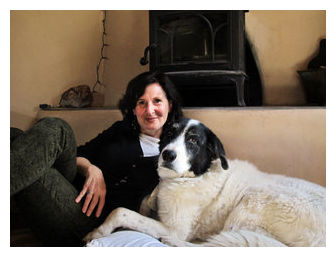
Whether any one of them can provide real answers is a matter of opinion, but pet owners can spend a lot of time and money trying.
Andrea Gladstone and David Radis wanted to know more about what was going on in their rescue dog's head, so they bought The Original Dog Tarot, a set of 30 cards and a guidebook developed by Heidi Schulman, a freelance writer and former television news producer from Santa Fe, N.M.
They spread the deck on the floor, and asked LoLa why she chewed up her puppy training book and the Dog Tarot guide.
The answer they divined from the three cards she picked - The Cat, the Pack and Justice - was that she was insecure in her new home and wrecked the books to establish her security and see if they held grudges.
"For me it is more the fun of it than the life lessons to be learned. But I respect the tarot," said David Radis, of Encino, Calif. "I have done one reading for each of my dogs and they were both spot on. I spread the cards out and ask the dog to touch the cards with their nose or paw."
Not everyone consults the latest books for fun. Cathy, an entertainment paralegal in California who asked that her last name not be used, called on pet psychic Jocelyn Kessler, author of The Secret Language of Dogs, to help her communicate with her 11-year-old lab Champ when he fell ill.
Through Kessler, Cathy said she was able to learn that Champ needed fewer injections, and she was able to surround him with his favorite plants in his final days.
A report from the American Pet Products Association says Americans spent $53 billion on their pets last year, including nearly $4 billion on services not related to food, supplies or health care. That category, which includes grooming, pet-sitting and pampering, was the fast-growing, increasing 9.7 percent over 2011. And it is forecast to remain the fastest-growing.
Anecdotal evidence indicates pet owners are willing to spend a lot. Kessler, for example, charges about $350 a session.
Another pet psychic, Sonya Fitzpatrick, who hosts a call-in radio show on Sirius XM, recently hosted two sold-out $500 a day workshops that promised to help owners deal with dogs that pee on the rug or bite children, among other issues.
Like Kessler, Fitzpatrick says she has been able to communicate with animals since she was a child. She offers telephone consultations, asking only that the pet owners send pictures.
"Telepathic communication works no matter where you are," she said.
Albuquerque veterinarian Jeff Nichol says he has seen a noticeable increase in pet owners turning to nontraditional methods, and cautions against using them for behavioral or medical issues.
"Often the methods worsen the problem, and the behavior becomes more challenging to turn around," he said.
Neither Kessler nor Fitzpatrick pretends to offer medical care, but both say they can aid vets by opening communication about what is bothering a pet. Kessler said she is careful not to take on cases of, for example, aggressive biting dogs.
Schulman said she developed the dog tarot "to bring people closer to their animals."
She said she came up with the idea when she was ill, and cooped up in a small apartment with her beloved rescue dog, Bosco, who has since died.
"I noticed he was very tuned into me," she said. "He knew exactly when to leave me alone, when to bother me. We seemed to develop this nonverbal communication and he looked like he wanted to talk. ... I thought if he could speak what would he say? I tried with logic. But I couldn't figure it out logically. So I thought, 'What if we could just invoke a little magic?' "



I am a psychic and often work with animals. Animals are my favourite to read - always so insightful and fascinating to learn what they are thinking.
Wishing
[Link]